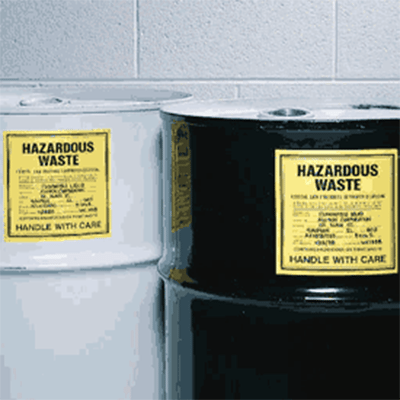
Throughout the coming weeks we will have several posts about container standards and management. Containers storing hazardous waste at permitted facilities are subject to the general facility standards as well as the specific container standards of 40 CFR 264/265.
When the EPA promulgated the unit-specific requirements (container standards), for hazardous waste containers, the Agency emphasized that although mismanagement of containers has caused some of the worst contamination, relatively few regulations would be needed to eliminate most of the problems. Today, I will be writing about some of the basics you need to know in order to maximize your container management efficiency.
To start, it is vital to note that all containers storing hazardous waste must comply with both state regulations and those regulations set forth by the federal government in 40 CFR.
That said, the word container is a bit non-specific. At Heritage, we teach that a container is any portable device in which a material is stored, transported, treated, disposed of, or otherwise handled. Now you may be thinking, “That definition is pretty non-specific too.” That is true. The definition is intentionally broad so that it can encompass all the different types of portable devices that may be used to handle hazardous waste, such as:
- Drums,
- Pails,
- Tankers, or
- Railcars, among possible others.
After looking into what items are available in which to store hazardous waste, we need to determine the definition of “storage.” Storing hazardous waste means holding it for a temporary period until it is treated, disposed of, or moved elsewhere. Again, this definition is intentionally broad in order to include any situation in which hazardous waste is held for any period of time.
It is important to remember that this information may not be all-inclusive and it is always best to check 40 CFR and your state regulations for the most up-to-date information. Keep checking the blog for future posts about container design and compatibility.
More News From Heritage
-
11/26/24
Honoring Teresa Wade: A Legacy of Dedication to Wreaths Across America
Celebrate Teresa Wade's legacy at Heritage Environmental and her dedication to Wreaths Across America. Learn her story and how you can honor veterans
-
11/14/24
Bright Futures Begin Lead-Free: Reducing Lead Exposure Together
Learn about lead decontamination, disposal processes, and join us in creating a lead-free future.
-
11/11/24
Celebrating Our Veterans at Heritage Environmental Services
-
10/31/24
Heritage Environmental Services Secures Commercial Permit Status for Orange, TX Incinerator
Learn more about Heritage Environmental Services securing a commercial permit for its Orange, TX incinerator, expanding waste disposal solutions.
-
10/14/24
Heritage Environmental Services Announces Timothy Thomas as Chief Operating Officer
Heritage Environmental Services (“HES”), an EQT Infrastructure portfolio company, announced today that Timothy Thomas will join the organization as Ch
-
10/1/24
Heritage Environmental Services Complete Acquisition of EBV from General Dynamics
Heritage Environmental Services, an EQT Infrastructure portfolio company, has completed the acquisition of EBV from General Dynamics.
-
7/31/24
PFAS Regulations: Is 6 the Magic Number?
Learn more about the current and proposed regulation for PFAS and what they mean from our Chief Sustainability and Innovation Officer, Angie Martin.
-
6/27/24
Heritage Environmental Services to Acquire EBV from General Dynamics
Heritage Environmental Servicess, an EQT Infrastructure portfolio company, will acquire EBV from General Dynamics








